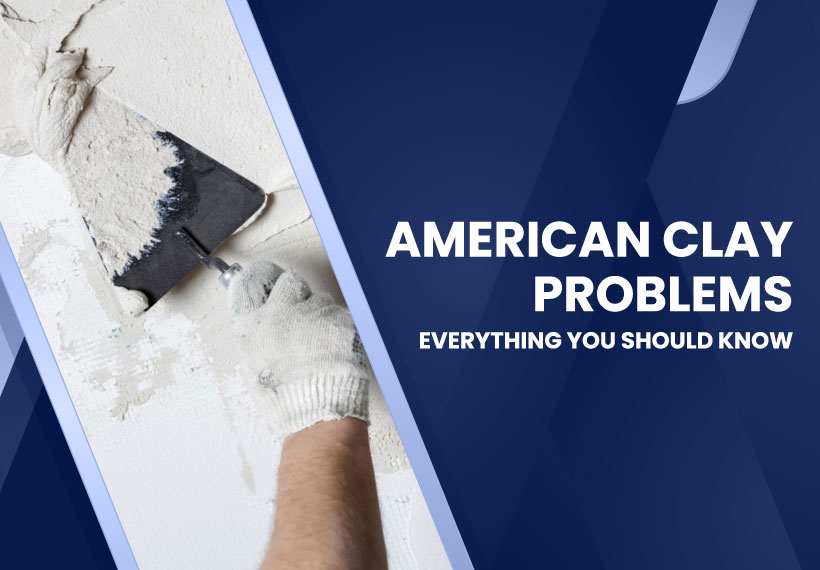American Clay Problems: Everything You Should Know

Have you ever encountered American Clay, an eco-friendly alternative to traditional paint? While it offers many advantages, some challenges and issues are associated with it. This article dives into American soil, exploring its benefits and potential problems.
What is American Clay?
American Clay is a natural, earth-based plaster used for centuries as a durable, sustainable wall finish. It consists of clay, aggregates, and natural pigments, making it an environmentally friendly option for interior wall surfaces.
Advantages of American Clay
- Sustainable: American Clay is a renewable resource, and its production has a minimal impact on the environment. It doesn’t involve harmful chemicals, making it safe for inhabitants and the planet.
- Breathable: Unlike conventional paints, American Clay allows the walls to breathe, preventing moisture buildup and contributing to a healthier indoor environment.
- Versatile: It comes in various colours and textures, offering numerous design possibilities to suit different interior styles.
- Natural Aesthetics: The unique look of American Clay adds a touch of warmth and elegance to any space, creating a cosy and inviting ambience.
Potential Problems with American Clay
- Application Challenges: Applying American Clay requires skill and expertise. It can lead to uneven surfaces and a subpar finish if not done correctly.
- Cracking: One of the primary concerns with American Clay is the possibility of cracking over time, especially in regions with significant temperature fluctuations.
- Sensitivity to Water: While American Clay is generally durable, it can be sensitive to water, and prolonged exposure may cause damage or discolouration.
Dealing with Cracks
- Proper Preparation: Ensuring a well-prepared surface before applying American Clay can significantly reduce the likelihood of cracking.
- Fibre Reinforcement: Incorporating fibre additives into the clay mixture can enhance tensile strength and minimize cracking.
- Maintenance: Regular maintenance and minor repairs can prevent small cracks from escalating into significant issues.
Protecting Against Water Damage
- Sealing: A breathable sealer on top of the finished American Clay surface can protect it from moisture and water damage.
- Avoiding Moisture-Prone Areas: It’s essential to avoid using American Clay in areas with high humidity, such as bathrooms or kitchens.
Hiring a Professional
- Experience Matters: To ensure a successful American Clay application, hiring a professional with experience in working with this material is best.
- References and Portfolio: Request references and check previous projects to gauge the contractor’s expertise and craftsmanship.
Comparing Costs
- Upfront Costs: American Clay can be more expensive than traditional paints. However, considering its longevity and eco-friendliness, it may be a worthwhile investment in the long run.
- DIY vs Professional Installation: DIY applications may seem cost-effective, but the risk of errors could cost more in repairs. Professional installation ensures a high-quality finish.
The Environmental Impact
- Sustainable Sourcing: Look for manufacturers that source clay and pigments responsibly, minimizing their environmental footprint.
- VOC-free: American Clay is free of volatile organic compounds (VOCs), reducing harmful emissions and promoting better indoor air quality.
Maintaining American Clay Walls

- Dusting and Cleaning: Regular dusting and gentle cleaning with a damp cloth can help maintain the appearance of American Clay walls.
- Avoiding Harsh Chemicals: Steer clear of harsh cleaning agents that can damage the clay surface or alter its colour.
FAQs
Is American Clay suitable for exterior applications?
No, American Clay is primarily designed for interior wall surfaces due to its sensitivity to moisture.
Can American Clay be used on uneven walls?
It is possible, but the walls must be properly prepared and levelled before applying American Clay.
Is American Clay mold-resistant?
While it is not entirely mould-proof, the breathability of American Clay reduces the risk of mould growth compared to conventional paints.
Can I paint over American Clay?
Yes, you can paint over American Clay if you wish to change the colour. Ensure the clay surface is clean and dry before applying paint.
Does American Clay require any special maintenance?
American Clay walls generally require minimal maintenance. Regular dusting and gentle cleaning should suffice to keep them looking their best.
Conclusion
American Clay is a fantastic alternative to conventional wall finishes, offering a natural and eco-friendly option for your interior spaces.
While it comes with certain challenges, such as cracking and sensitivity to water, these issues can be mitigated with proper preparation, installation, and maintenance. By understanding the potential problems and knowing how to address them, you can enjoy the beauty and benefits of American Clay for years to come.

